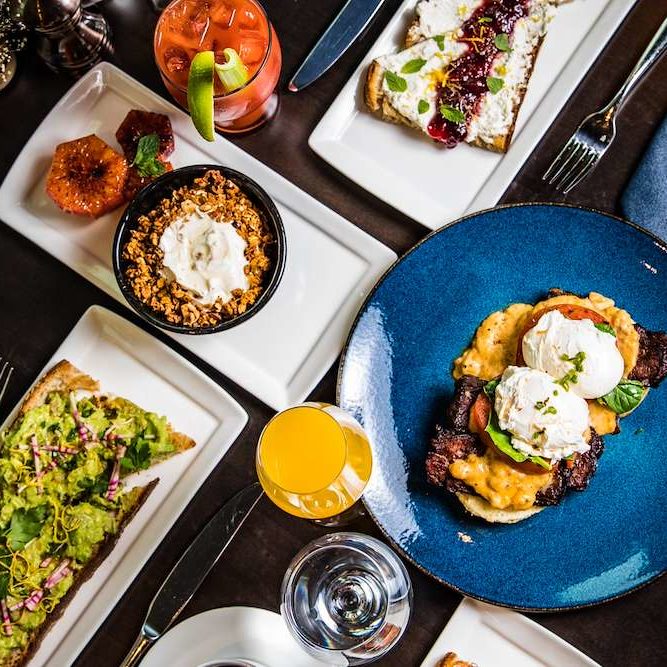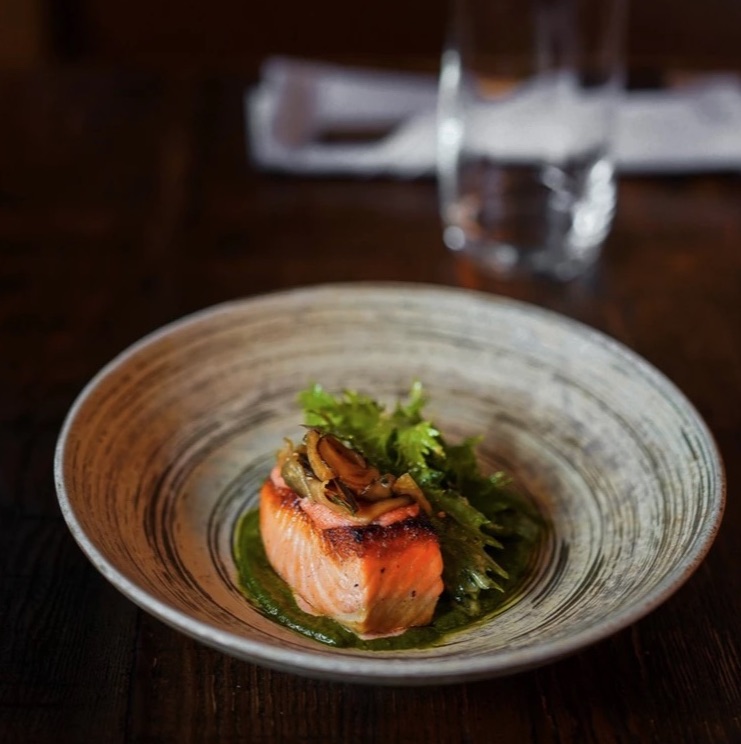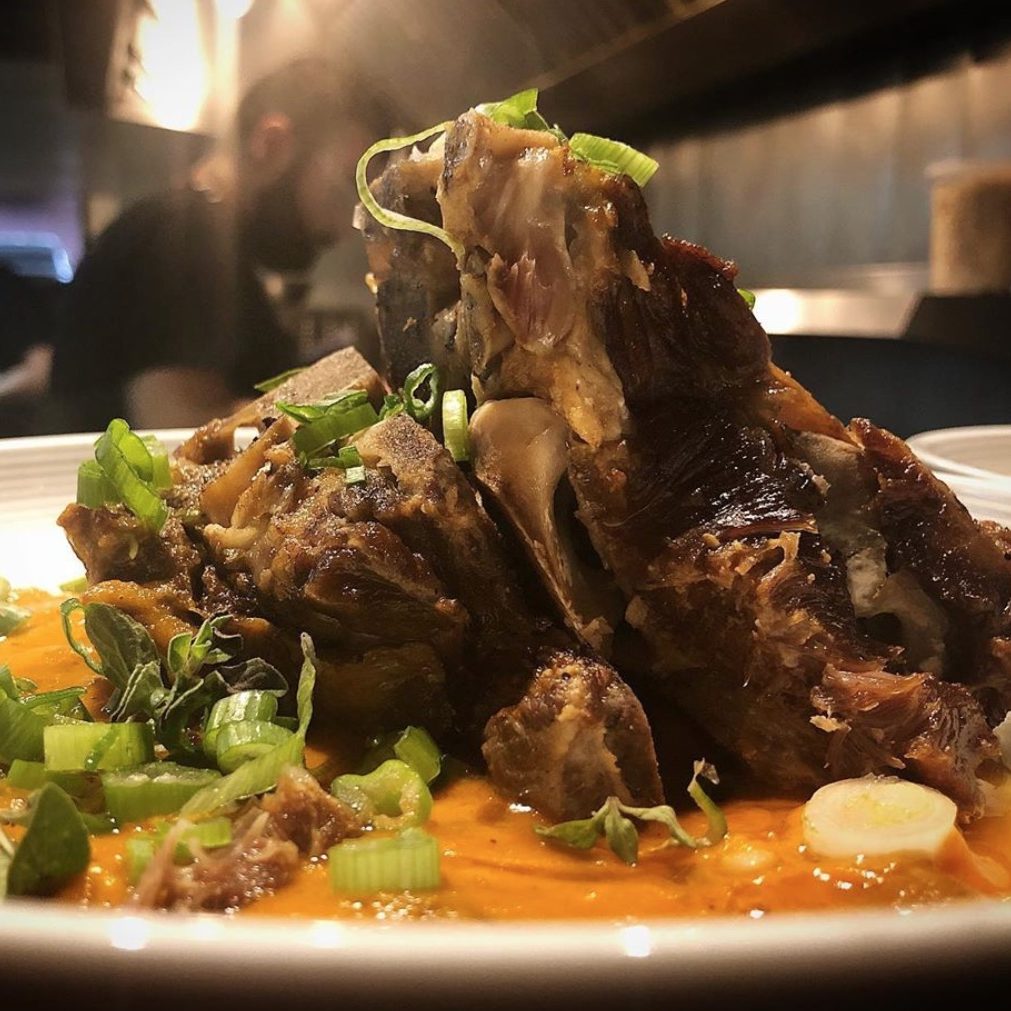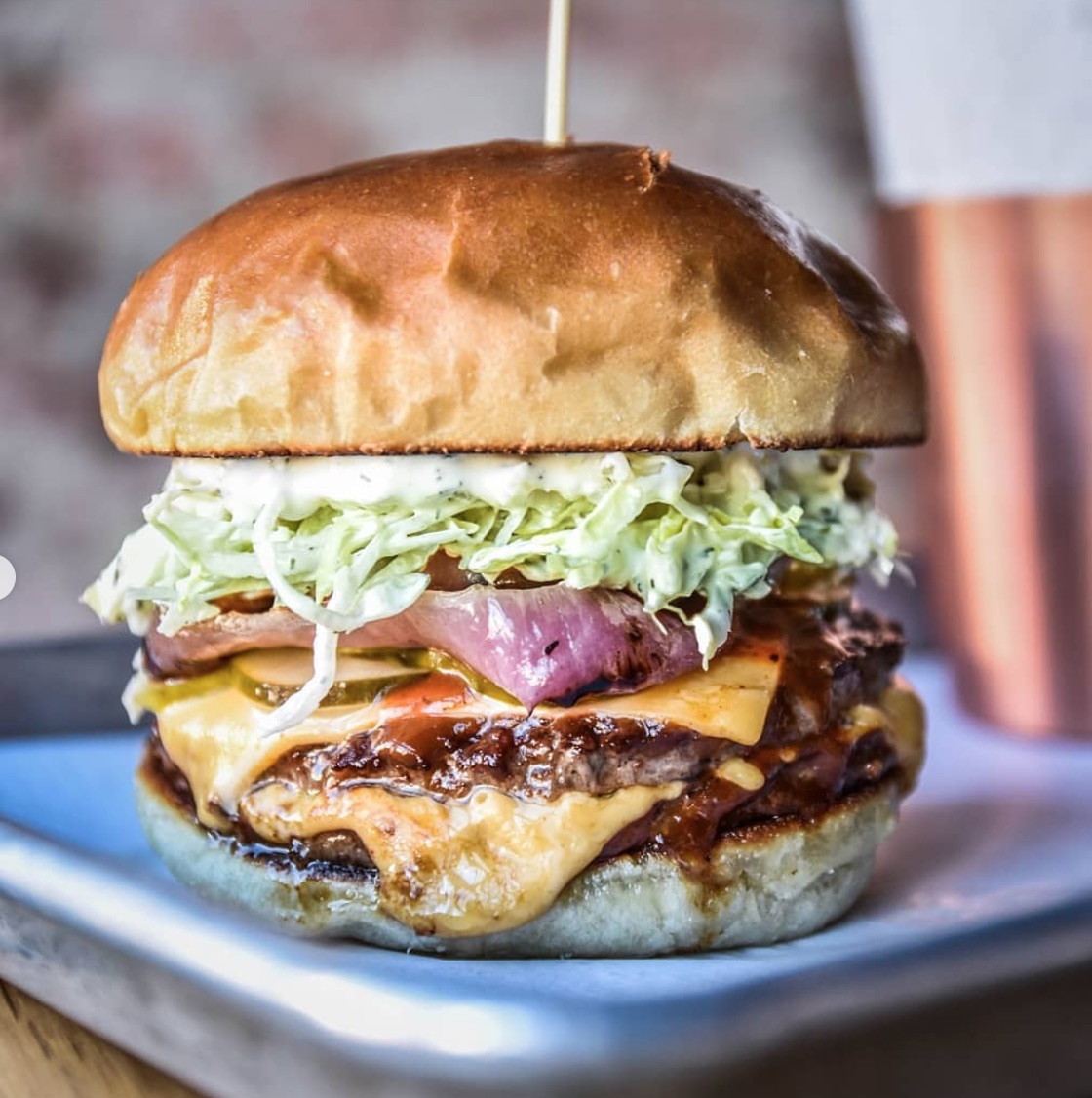
Share
In the vibrant region of the Pacific Northwest, a healthy and diverse dining scene would be expected.
However, there was little to prepare this visitor for the reality. As much a pleasure as it is to walk the museums of Seattle, the restaurants and bars could too be shrines, albeit it to great cuisine.
The Fire Of Patagon
The age-old tradition of cooking beef over fire is not unique to Texas, nor are Texans the most prolific. To witness the summit of beef and fire, one would have to go to South America and watch as they repeat the process over and again, each time achieving a careful balance of savory, salty, citrus and char. For the lucky residents of Seattle, they don’t need to go to such lengths, as Patagōn, the signature restaurant of Seattle’s Charter Hotel, has brought South America to them.
Chef Ben Davison, a student of Beard Award-winner Husk and New York City’s lauded Babbo Ristorante e Enoteca, has purloined the best methods of the gauchos – build a white-hot fire in a central pit, then put angled grills around it, placing beef and other proteins along those grills to char. As a result, the steaks are a revelation, with smoke from the parrilla drifting through the whole of the cut and kissing it with smoky char. The appetizer section of the menu hides an absolute diamond for Southern palates, as Chef uses a Husk-learned process to make the crispiest, butteriest chicharron north or south of the Red River.

But still, something stands out as brightly as Davison’s culinary talent. Patagōn’s servers all know the chef, talk to other staff about what’s overheard, what diners are responding positively or negatively to. Their every effort is on being attentive. When Davison proclaims his intent to build a restaurant to win awards, it is the service, as much as the exemplary food, that could power him and his staff to accomplish it. From South America, through the Deep South, and to the Pacific Northwest, Patagōn is home away from home for nearly everyone south of Washington State.
A Journey Like No Other – Adana
The best meals make it difficult to remember any one particular dish. Rather, they tell a story that plays out in multiple parts. If it is truly great, like all written works, it is a carefully constructed tale, with compelling chapters, seamless transitions, and a thematic thread, deftly weaved into the entire experience. A meal at Adana is, then, on par with the likes of Dickens, Tolstoy and Austen. First, there is the introduction. A cocktail serves to announce the flavors that the rest of the tale will tell. Whether lychee, shiso, or, in the case of a recent visit, a wagyu fat-washed Old Fashioned, it is the essence of foreshadowing. The menu allows a diner to decide the direction of his or her story, like a “Choose Your Own Adventure” book. But, within those choices, paths are clearly marked, despite the seasonal menu.
For my opening scene, Adana served shishito peppers, flash-blistered in lard and served with kewpie mayo. It echoed the umami of the wagyu beef from the cocktail, and introduced sharper flavors, like the bright shishito. The mid-winter visit saw a cauliflower second course that was topped with pork belly and bonito, all of which amplified one another to make it the most intriguing of second chapters – meaty but not too heavy. Chef Shota Nakajima, who studied in Osaka at a Michelin star restaurant and has been nominated for two Beard Awards in the past two years, would have it no other way. And, in Chef Shota’s care, no diner would have it another way, either.

The dramatic turn arrived in the fourth chapter, as Chef Shota introduced the best flavors of cold fried chicken in the midst of a great hunger, and condensed the whole spectrum of flavor into two bites. A chicken karaage, paired with a rich sauce and a lightly pickled onion ring was enough to nominate this meal as a prize-winner, but the cold presentation made its epic regard all but assured. If there were any doubt, it was erased by the brilliant final chapter, a beef short rib of such extensive marbling that one wondered whether it came with an A5 rating or not, presented atop pureed parsnips, accented with cotija cheese, which supplied the salinity for the entire dish. Each bite was purest velvet. There aren’t enough Pulitzers for stories like the one Adana and its chef are telling in Seattle.
The Most Delicious Analogy – Il Corvo
Not to inspire test anxiety, but consider the following analogy: Franklin Barbecue is to Austin as what is to Seattle? In the tiniest space in Seattle, just east of the waterfront, the SAT question finds a brilliant answer. Il Corvo, a lunch-only pasta restaurant where the line begins well before their 11 am opening, and persists throughout the lunch hour. What patrons are waiting for is, with genuine humility, the best pasta created outside of Italy. They only offer a handful of handmade dishes each day, and there are no substitutions or customizations. It isn’t as though they don’t allow them, it is more that no one would challenge perfection. Pasta in Texas has never seen this much care, nor been elevated to this status. Pappardelle Bolognese, for example, comes rich and thick with well-browned proteins, artfully balanced between wide noodles that cradle each bit of savory sauce, and inspire the next bite and the bite after, all to discover how it is that the chefs at Il Corvo have managed this divine magic. But, after perhaps the third probing bite, or perhaps some of the pillowy focaccia, simply surrender to the entire experience and thank Il Corvo for visiting their miraculous blessings upon you.
Northern Conquest: The Best Southern Cuisine Is In The North – JuneBaby
Smell is a strong memory generator. Perhaps that is why the taste of Seattle’s JuneBaby has yet to leave. At a single taste, the cuisine is both novel and distinctively ancient, echoing the best memories of Southern cooking, of long hours in a warm kitchen, spent helping a family member to bake or stirring a simmering pot. Chef Edouardo Jordan, who was already lauded as a great chef for his first, risk-taking restaurant in Seattle, Salare, decided to take his next outing in a more familiar direction, dragging the concept “home” to the South.
His biscuits belong in a hall of fame, where they would reign over all other offerings, whether from home kitchens or the finest restaurants in New Orleans. They are buttery and flaky, with a crispiness on the edges of the exterior that make them seem kin to croissants, but still fluffy enough in the interior to hold a little honey or a little hot sauce or a slice of country ham and still outshine anything combined with them. Chef Jordan serves them with some cane syrup, which is right at home with the baked perfection. But the dish that ended any debate on whether or not this was truly a great Southern restaurant, despite its northern location, was the pork chop. It has since gone through a few other iterations, but at the time, it was served with a pozole reduction.

There are few cuisines that can be condensed to single iterations and foundational flavors. Caramelized onion and shallots will always be fundamentally French. Garlic and basil will ever speak of Italy. Where Mexican food is concerned, it gets tricky. Is it garlic, tomato, cumin, or jalapeño? Is it lime, salt, avocado, or agave? In the border towns of Texas, and well into the southern United States, the question is answered, wordlessly, every weekend, Whether with the adventuresome menudo or without, the deep and complex red of a genuine pozole is enough to send any Latino or, let’s face it, Texan, New Mexican, Arizonan, Nevadan or Baja Californian right back to where they first encountered the corn- (or hominy-) accented soup that has been known to heal all ills, whether contracted or the result of poor life choices the day before. It is a complex mix of flavors, made in staggeringly large batches for countless diners and guests. And, yet, underneath a perfectly grilled pork chop, and accented by corn kernels, was a reduction of that very soup. Concentrated into a pure form, this sauce on a piece of pork was the marriage of true Southern cuisine and sanguine Mexican cuisine. It doesn’t get any more Southern that these two dishes, and any self-respecting Southerner who journeys north to Seattle must make it an absolute priority to stop in, order a few dishes, and reassure Chef Jordan of that fact.
The New American Standard – Tacoma’s Wooden City
Tacoma and Seattle both have a vein of blue-collar humility running through them. That ethos doesn’t clamor for experimental menus or challenges to the palate. Rather, it clamors for simple foods, prepared exceedingly well. One should never underestimate the wonder of a good burger or the perfect French fry. Perhaps it is that honest thread that makes a place like Wooden City in Tacoma such a vital necessity. With its warm wooden décor, illuminated by amber bulbs and within sight of the water, Wooden City could be an Instagram photo opportunity waiting to happen, and the food of no note.

But, one taste of the French Onion soup or the 24-month prosciutto, and it’s clear that Wooden City has taken what most would deem basic and elevated it to fine dining status. The soup, clearly painstakingly prepared in the slow and steady manner the French prescribe, is hearty without being too heavy. It is a welcome warmth to fight off any chill the Northwest might hurl. The burger, too, thrives on the attention to each ingredient that Wooden City pays to them. The ingredients are listed simply on the menu, but the result is far greater than the sum of its parts, and the entire experience turns the notion of “American Standard Fare” on its head. If this is the standard, then we welcome the day when it is ubiquitous in the whole United States.
This is the second in a three-part series by Daniel Ramirez, including #TravelTuesday: 7 Reasons to Visit Seattle Now. Look out for his upcoming #FoodieFriday article on the Seattle bar scene.
Cover photo courtesy Visit Seattle














